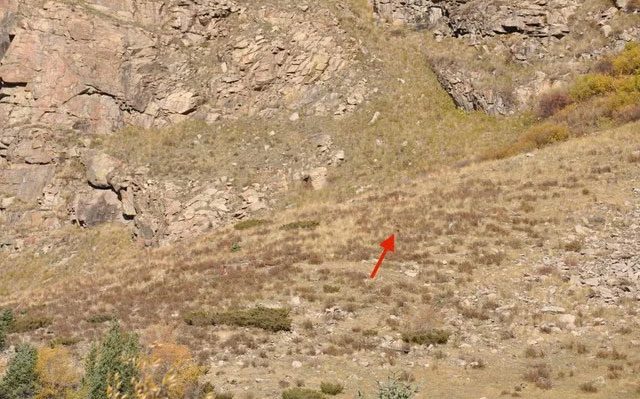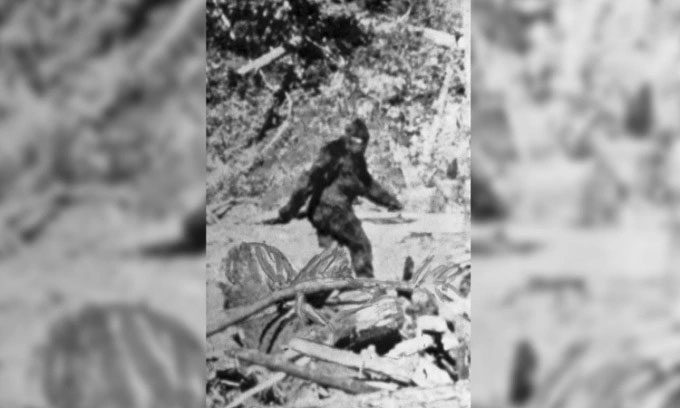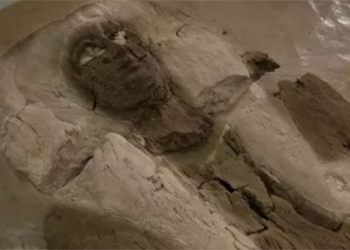A couple from the United States recently shared images of a strange, hairy creature that walks on two legs on a mountainside in Colorado.
According to reports, Shannon Parker shared a video of a giant, unusual creature spotted on the mountainside while she and her husband, Stetson Tyler, were riding a train from Silverton to the city of Durango in Colorado.
Parker recounted that as the train passed a mountainside, she asked her husband to look for any moose. However, Stetson noticed something moving instead.
“He told me it could be Bigfoot,” Parker shared on her personal Facebook page.
A male passenger sitting next to Stetson took out his phone and recorded the strange creature moving on the mountainside before it sat down and blended in with the surrounding foliage.
Parker remarked: “It’s very difficult to spot Bigfoot. There were hundreds of people on the train, but only 3 or 4 actually saw this creature. I don’t know what you think, but we believe it was Bigfoot.”

The American couple discovered a creature resembling Bigfoot on a mountainside in Colorado. (Photo: Shannon Parker).
In an interview with The New York Post, Parker stated that the strange creature was around 2 meters tall and that the train conductor also mentioned having seen a similar creature before.
“The conductor said he had traveled in this mountainous area and had seen larger footprints. The stride was even longer than his ski boots,” Parker added.
Parker’s Facebook post has received mixed reactions from the online community, with many expressing skepticism about the sighting. It remains unclear whether the creature in the video shared by Parker is indeed Bigfoot.
The U.S. National Guard noted that stories of Bigfoot have circulated for a long time, including tales of a 2-meter tall, hairy creature lurking in the woods and occasionally scaring campers and hikers.
Throughout history, settlers in North America during the late 1800s and early 1900s reported numerous sightings of Bigfoot. Various research groups continue to conduct searches to prove the existence of Bigfoot in the northwestern mountainous regions of the U.S., but they have yet to find convincing evidence.
Is Bigfoot real?

A photo of a creature believed to be Bigfoot in northeast Eureka, California in 1967. (Photo: Bettmann).
Bigfoot (or Sasquatch) is a creature resembling a giant primate that is said to roam North America. It is considered a mysterious being, much like the Loch Ness Monster. In reality, there is little evidence to prove that Bigfoot truly exists. While there have been some sightings of this strange creature, clear images of its face and shape are lacking.
Most sightings of Bigfoot tend to occur in the northwest, where the giant creature is linked to Native American legends. The term Sasquatch is believed to originate from Sasq’ets, a word used in the Halq’emeylem language by some Indigenous people in southwestern British Columbia, meaning “hairy person” or “wild man.”
In 1884, the British Colonist in Victoria, Canada, published an article describing a strange gorilla-like creature in the area, sparking numerous local rumors. John Green, author of the book Sasquatch, compiled a list of 1,340 sightings from the 19th to the 20th century.
In 1958, the Humboldt Times in northern California published a story about the discovery of giant footprints near Bluff Creek, California, referring to the mysterious creature as Bigfoot. Since then, curiosity about Bigfoot has surged, especially in the latter half of the 20th century.
To date, there is still no concrete evidence proving the existence of Bigfoot. When scientific analyses have been conducted on samples suspected to belong to Bigfoot, experts have found that they have ordinary origins.
Although scientific evidence for Bigfoot’s existence may be scarce, in fact, there was a giant primate that walked on two legs and lived on Earth. Specifically, fossil evidence points to a creature known as Gigantopithecus blacki, which stood about 3 meters tall and weighed up to 270 kg. However, this creature lived in Southeast Asia, not North America, and it has been extinct for hundreds of thousands of years. This primate is more closely related to modern orangutans than to humans or chimpanzees.




















































